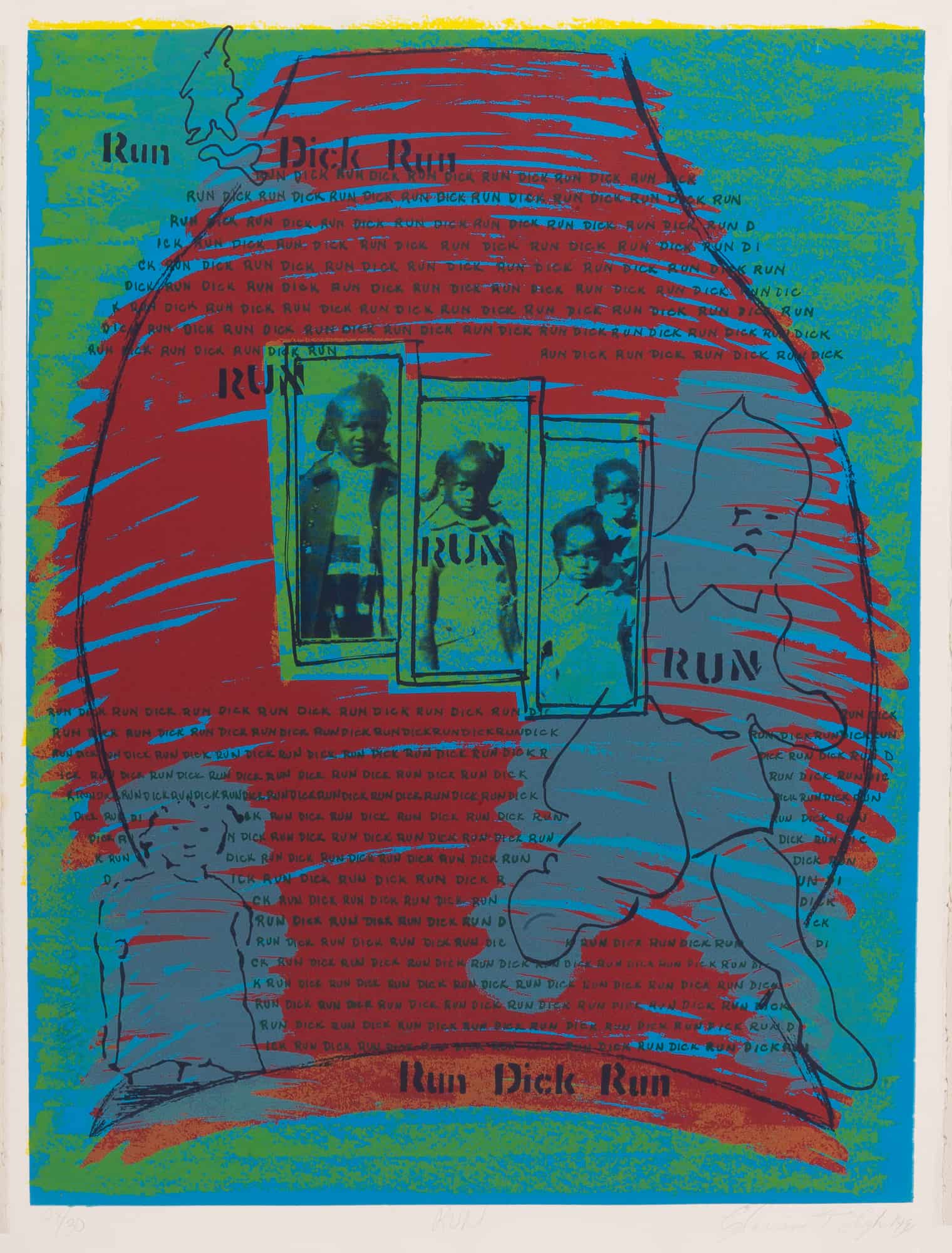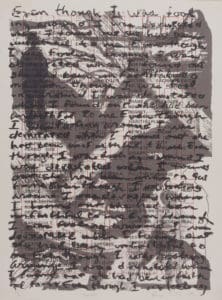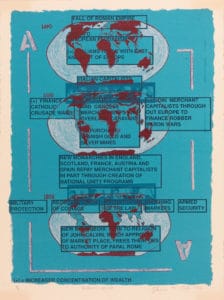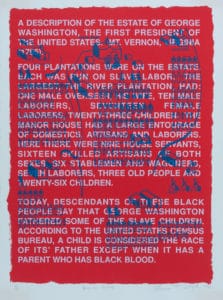Clarissa Sligh

Clarissa T. Sligh is an African-American book artist and photographer based in Asheville, North Carolina. At age 15, she was the lead plaintiff in a school desegregation case in Virginia. In 1988, she became a co-founder of Coast-to-Coast: A Women of Color National Artists' Project. Collectively, they focused on promoting works completed by women of color.
Learn more at https://clarissasligh.com/
Clarissa Sligh has received many honors including:
-
National Endowment for the Arts Fellowship
-
Anonymous Was a Woman
-
the International Center for Photography’s Infinity Award
-
the New York Foundation for the Arts
Among many others, her work is in the collections of
-
-
The Museum of Modern Art
-
the National Gallery of Art
-
the National Museum of Women in th Arts(NMWA)
-
the Walker Art Center in Minneaplois, MN
-
Run
1991
screen print
edition:30
image: 28"h X 20"w
6 colors on Rives BFK
Run (1991) combines elements of fear and flight. Ku Klux Klan members run as if transversing an ancient Greek vase. For Black children, the inane early reading text "run Dick run" refers to challenging personal and political realities. The sacred vessel form may shape fear, hold hope or protection. It may offer a connection with the clay of the earth or contain sexual meaning.
Devastated (1990) incorporates a handwritten text with photos and drawings and lists of words. These sometimes appear with hand coloring Sligh added at a later date.
In 1992, Sligh returned to Art Awareness with Susan Spencer Crowe and Barbara Takenaga. She produced a powerful series of screen prints in small editions. They address the economics and history of slavery in America:
Whose Blood questions perceptions of humanity, heritage, and identity.
Virginia Estate sizes up long unacknowledged pieces of George Washington's legacy.
Revolt describes the history of slave revolts. It details the results of cruel punishment.
In Trade Routes, Clarissa's own image oversees the slave trade pictured in symbols and recounted history.
The Unknown World maps the power factors in a timeline of financial relationships.





